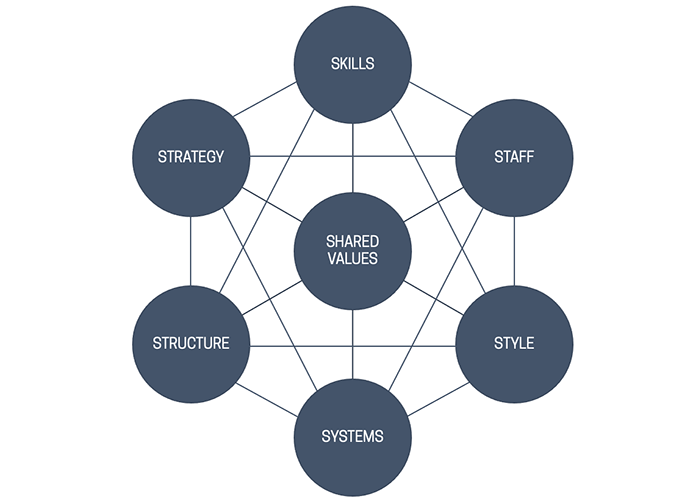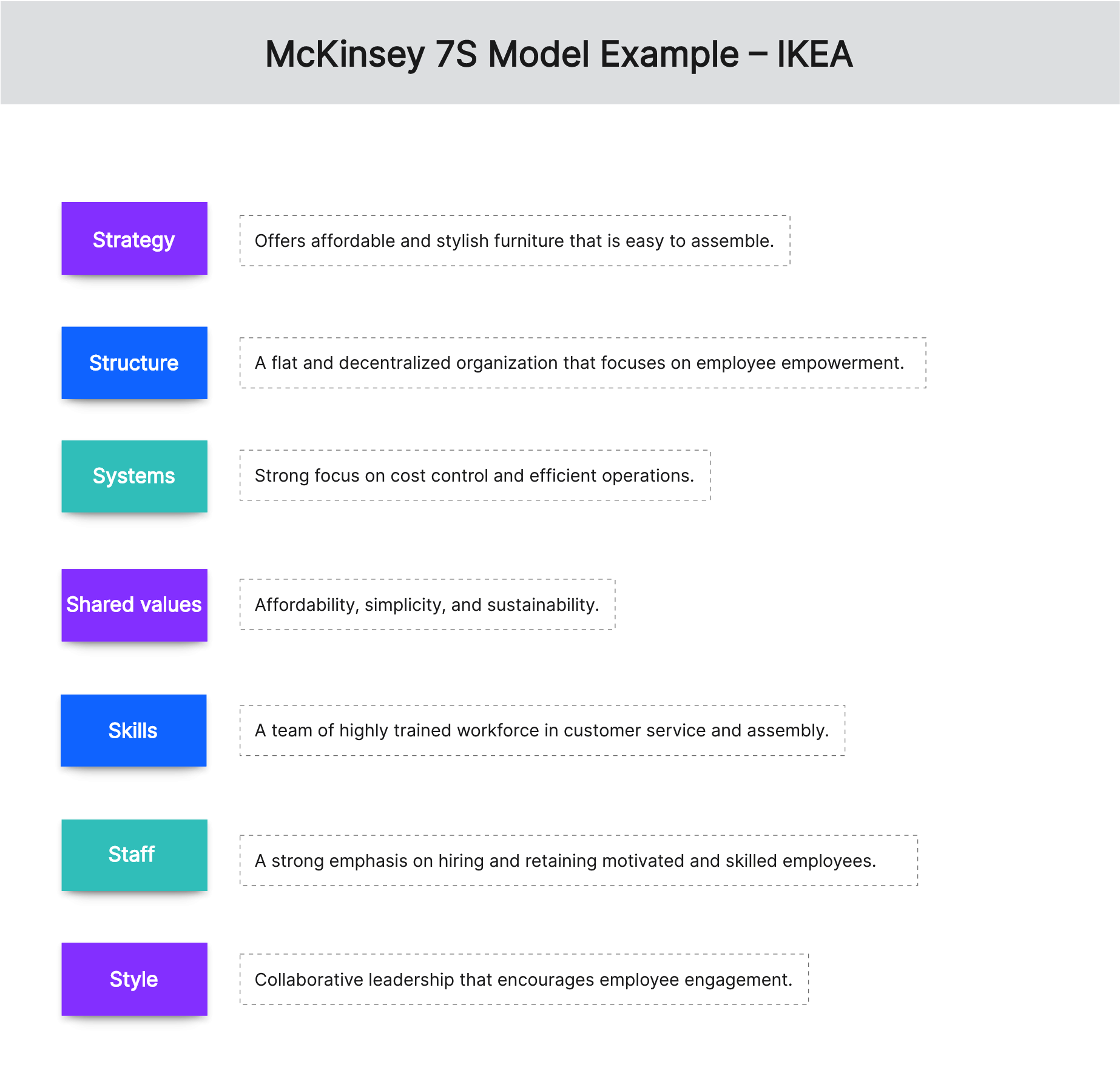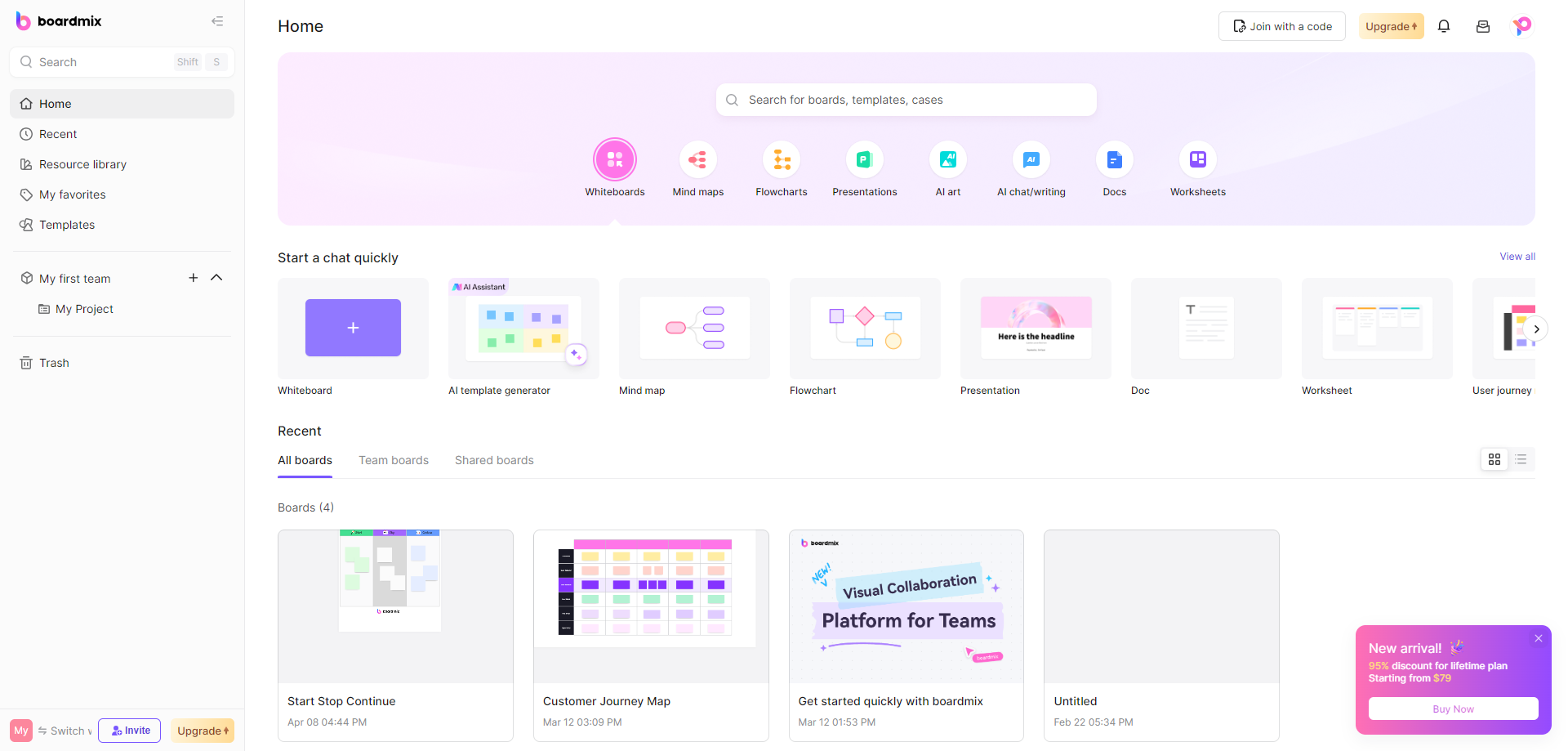Can you tell how well your company is positioned to achieve its organization? Or do you know the elements that influence its ability to expand effectively? With the McKinsey 7S model, you can answer these and more questions about your organization.
In this article, we explore the McKinsey 7 S model with examples to give a better understanding of this model. We also recommend a one-stop tool to get you started in making your model. Let’s dive in.

What Is the McKinsey 7S Model
The McKinsey 7S model is a tool that is used to analyze the organizational design of a company. This model aims to predict the effectiveness of the organization as it interacts with seven key elements. These elements include Structure, Strategy, Skill, System, Shared Values, Style, and Staff. This model is centered around the structure of the organization rather than the strategic aspects of change management. This makes it an effective tool for understanding the performance of a company.

Components of McKinsey 7S Model
The McKinsey 7S model is applicable in different situations where it helps in understanding the way various parts of the organization work together. The mode specifies the seven components that affect the effectiveness of the company. This makes it a useful tool to make decisions on future corporate strategy.
The seven components of the McKinsey 7S model can be classified as either hard or soft. Let’s start with the hard elements. These are the components of a company that are easily identified and influenced by the management. They include:
- Strategy: A well-curated business plan that allows a company to formulate its action plan. The structure is reinforced by the company’s values and visions to achieve a sustainable competitive advantage. The organization deploys the plan to remain competitive in its market and industry. Ideally, a company will come up with a long-term strategy that aligns perfectly with other elements of the model while communicating its objectives.
- Structure: This is the way a company is organized. It specifies issues of accountability relationships and chain of command in the organizational chart. The structure comprises the corporate hierarchy and its divisional makeup. It outlines how the operations function and interconnect, detailing the responsibilities of workers and management configuration.
- Systems: These are the technical and business infrastructure of the company. They establish workflow and decision-making chains. Systems also refer to the daily procedures and decisions that guide the standard operations of the company.
The next classification of the McKinsey 7 model is the soft elements. These are the more tangible and fuzzier elements that are influenced by corporate culture. They include:
- Shared values: The values, objectives, and mission of the organization. They determine the alignment of key elements that maintain organizational design. Shared values also refer to the commonly accepted norms and standards within the organization that influence the behavior of the entire staff. Usually, this is detailed in company guidelines that are presented to the staff.
- Skills: The competencies and capabilities of a company that allows employees to achieve the set goals and objectives. They comprise the capabilities and talents of the organizational staff, which determine the kind of achievements the company will accomplish.
- Style: This is the attitude of senior employees. It establishes a code of conduct through their symbolic decision-making and interaction, which in turn forms the management style of the leader. Style speaks to the approach and example that the management takes in leading the company.
- Staff: Comprises the decisions related to talent management and human resources of the company, including recruitment and reward systems. Staff are the personnel of the company, where their motions reside, how large the workforce is, as well as how they are trained and prepared for the job.
Explain McKinsey 7S Model with 6 Examples (Famous Companies)
To give you a better understanding of how the McKinsey 7S model functions, let’s have a look at the McKinsey 7S framework with company examples that have a perfect elaboration:
McKinsey 7S Model Example – Apple
Apple Inc. is the world's largest technology by revenue, and it is also ranked the biggest company by market capitalization globally. The following McKinsey 7S model for Apple demonstrates how the company has attained this position.

McKinsey 7S Model Example - McDonald's
McDonald’s Corporation is a multinational fast-food chain based in the United States. It was founded in 1940 as a restaurant and is now known for French fries, hamburgers, and especially Big Macs. The McKinsey Model for McDonald's is as follows:

McKinsey 7S Model Example – IKEA
IKEA produces primarily home furniture. Other products include home accessories and design ideas. The company is renowned for offering inspiration for big dream homes with small budgets. With a unique business structure, here is IKEA’s McKinsey 7S model:

McKinsey 7S Model Example – Tesla
Tesla is best known for its pioneering work in electric vehicles and sustainable energy solutions. The company's mission is to accelerate the world's transition to sustainable energy. They achieve this by producing a range of electric cars, battery energy storage systems, and solar energy products. Here is the McKinsey 7S model of Tesla.

McKinsey 7S Model Example – Pepsi
PepsiCo is the company that manufactures the carbonated soft drink, Pepsi. The company was originally created and developed in 1983 and has grown to become the second most valuable soft drink globally after Coca-Cola. The McKinsey 7S Model for Pepsi reveals its unique business structure.

McKinsey 7S Model Example – Nokia
Nokia Corporation is a multinational telecommunications company that is based in Finland. The company is renowned for consumer electronics and information technology. The company has faced challenges in its ability to adapt and stay competitive in the innovative mobile phone market. With its resistance to smartphone evolution and ineffective marketing strategies, the once-top phone manufacturer had a slow trend in recent years before introducing new products to remain relevant. The McKinsey 7S Model for Nokia is as follows:

Key Takeaway: A McKinsey 7S Model Template and a One-stop Tool
An effective McKinsey 7S model will help you analyze your company and identify any performance gaps. To ensure you are getting the right information, you need to include all the important information. The Boardmix McKinsey Model Template is a one-stop tool to get you started with this management model. It will help you map out what you need to do to achieve your business strategy. Simply sign up and start filling it out with appropriate information!
Creating McKinsey 7S Model on Boardmix: An Array of Engaging Features
Developing a comprehensive McKinsey 7S model can be made considerably efficient and collaborative with the variety of features offered by Boardmix Online Whiteboard.

Interactive Whiteboard Interface
Boardmix's online whiteboard presents an interactive interface to visualize and construct your McKinsey 7S model. The ability to draw, write, or annotate directly on the board makes it a dynamic tool for visually expressing complex management concepts.
Real-Time Collaboration
Boardmix's collaboration feature allows teams to work together simultaneously on the same McKinsey 7S model. This real-time interaction fosters brainstorming, immediate feedback, and seamless co-creation among team members.
Drag-and-Drop Functionality
The drag-and-drop functionality of Boardmix enhances the flexibility of creating and managing elements of the McKinsey 7S model. It enables users to easily arrange, group, or reposition elements, making the entire process adaptable and user-friendly.
Multimedia Integration
Boardmix lets you enrich your McKinsey 7S model with various multimedia elements. Users can integrate relevant images, documents, or even videos directly onto their model. This capability aids in providing additional context and details for a more comprehensive understanding of the model.
AI-Enhanced Brainstorming
One of Boardmix’s unique features is its AI enhancement that aids in brainstorming sessions by suggesting related ideas based on user inputs. This can be particularly valuable while filling out the different components of the McKinsey 7S model, as it can offer fresh perspectives and insights.
Ready-Made Templates
Boardmix provides pre-built templates for the McKinsey 7S model. These templates offer a well-structured format for users to fill in with organization-specific details, thereby streamlining the model development process.
Cloud Storage & Accessibility
With Boardmix, your McKinsey 7S models are auto-saved and securely stored in the cloud. This ensures your work is safe and accessible anytime from anywhere.

Leveraging these unique features of Boardmix Online Whiteboard can greatly enhance the process of creating an insightful and detailed McKinsey 7S model. The platform promotes efficient brainstorming and collaboration while making the complex task of business modeling much more intuitive and engaging.








